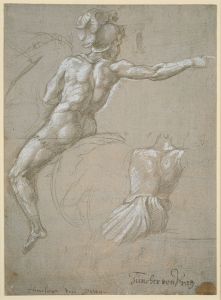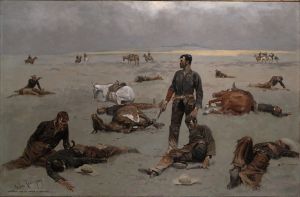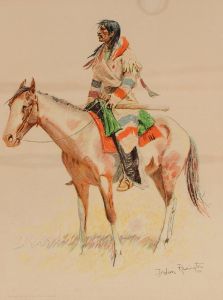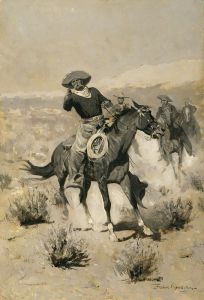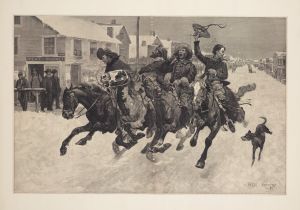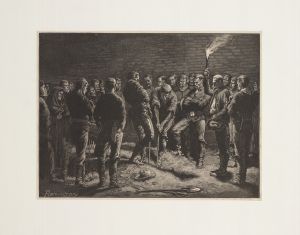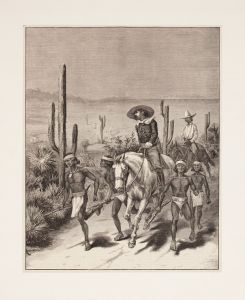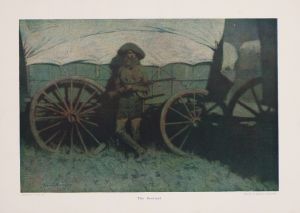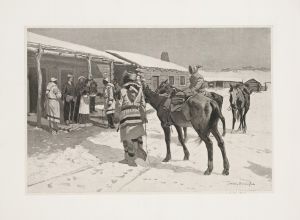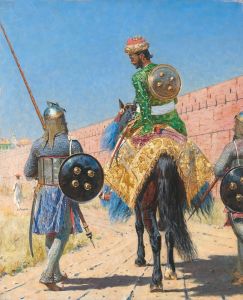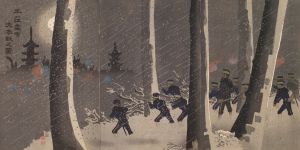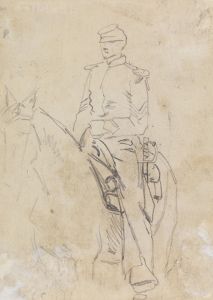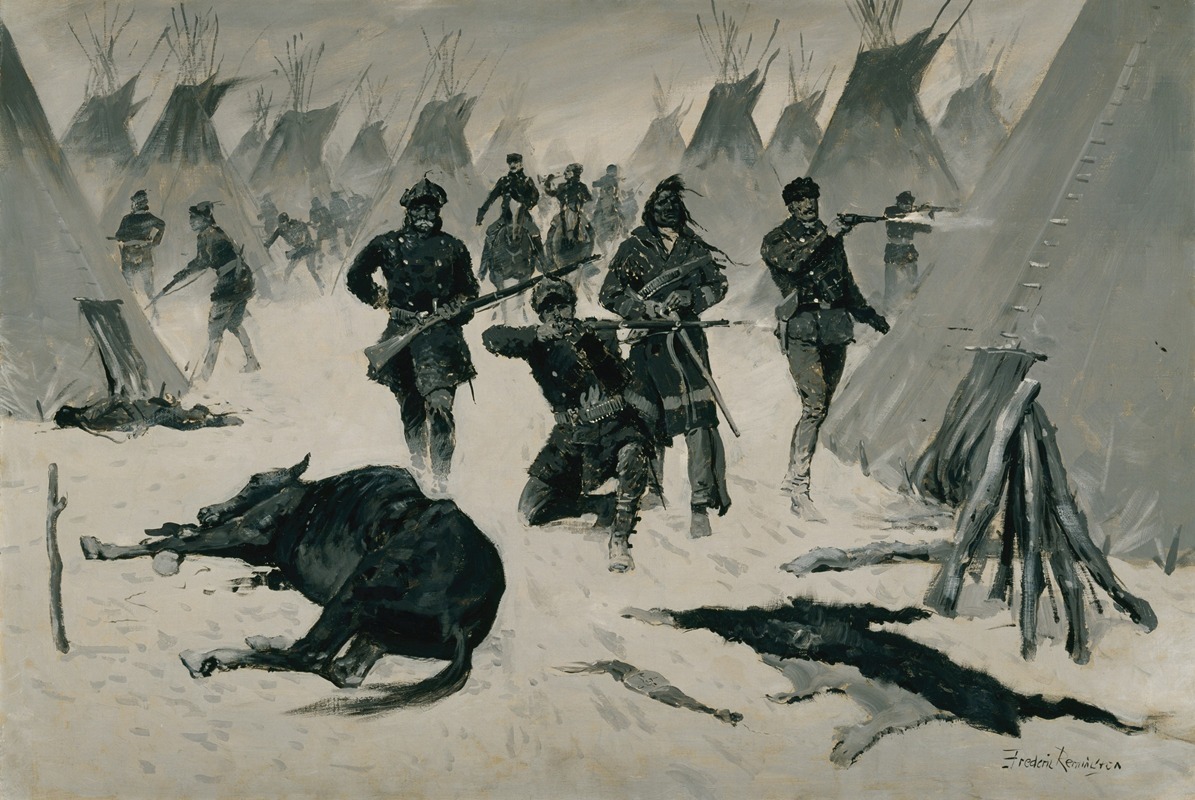
The Defeat of Crazy Horse
A hand-painted replica of Frederic Remington’s masterpiece The Defeat of Crazy Horse, meticulously crafted by professional artists to capture the true essence of the original. Each piece is created with museum-quality canvas and rare mineral pigments, carefully painted by experienced artists with delicate brushstrokes and rich, layered colors to perfectly recreate the texture of the original artwork. Unlike machine-printed reproductions, this hand-painted version brings the painting to life, infused with the artist’s emotions and skill in every stroke. Whether for personal collection or home decoration, it instantly elevates the artistic atmosphere of any space.
"The Defeat of Crazy Horse" is a painting by the American artist Frederic Remington, known for his depictions of the American West. Remington, born in 1861, was a painter, illustrator, sculptor, and writer who specialized in the late 19th-century American West. His works often focused on cowboys, Native Americans, and the U.S. Cavalry, capturing the dynamic and often tumultuous interactions between these groups.
Frederic Remington's art is characterized by its attention to detail and historical accuracy, as well as its vivid portrayal of action and movement. He was deeply interested in the American frontier and sought to document the rapidly changing landscape and culture of the West during his lifetime. Remington's works are considered significant historical records, providing insight into the period's social and cultural dynamics.
"The Defeat of Crazy Horse" is one of Remington's many works that depict historical events involving Native American figures. Crazy Horse was a prominent Oglala Lakota leader known for his role in the resistance against U.S. government policies and military actions. He is best remembered for his leadership at the Battle of the Little Bighorn in 1876, where the combined forces of the Lakota, Northern Cheyenne, and Arapaho tribes defeated the 7th Cavalry Regiment of the United States Army, led by Lieutenant Colonel George Armstrong Custer.
The painting likely portrays an imagined scene related to the events surrounding Crazy Horse's eventual surrender and death. Crazy Horse surrendered to U.S. troops in May 1877, following a prolonged campaign by the U.S. Army to force Native American tribes onto reservations. His surrender marked the end of significant armed resistance by the Lakota and their allies. Later that year, Crazy Horse was fatally wounded during a scuffle with soldiers at Fort Robinson, Nebraska, under circumstances that remain a subject of historical debate.
Remington's depiction of such events often reflects the perspectives and attitudes of his time, which can include romanticized or dramatized interpretations. His works are valuable for their artistic merit and as cultural artifacts that reflect the complex narratives of American history.
While "The Defeat of Crazy Horse" captures a moment of historical significance, it is essential to approach such works with an understanding of the broader context and the artist's perspective. Remington's art provides a window into the past, but it is also a product of its time, shaped by the cultural and social norms of the late 19th and early 20th centuries.
As with many historical artworks, it is crucial to consider multiple sources and viewpoints to gain a comprehensive understanding of the events depicted. Remington's paintings, including "The Defeat of Crazy Horse," continue to be studied and appreciated for their artistic qualities and their role in documenting the history of the American West.





